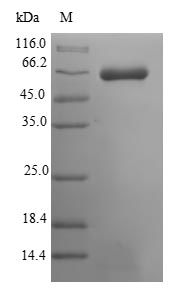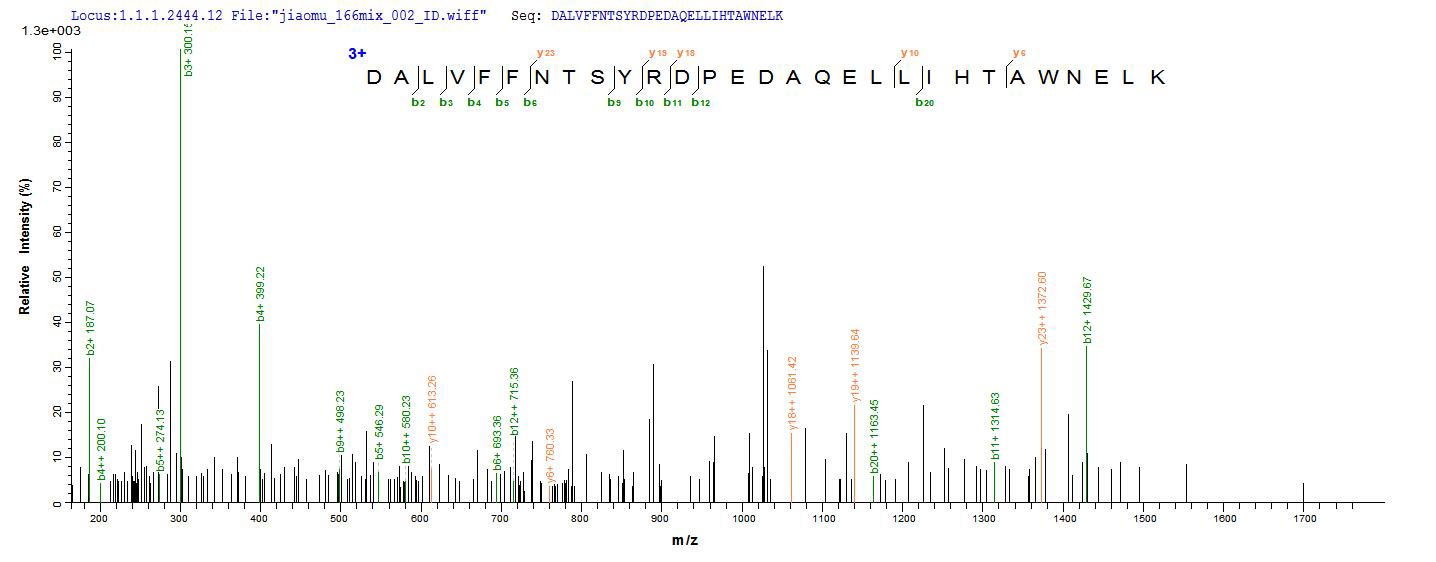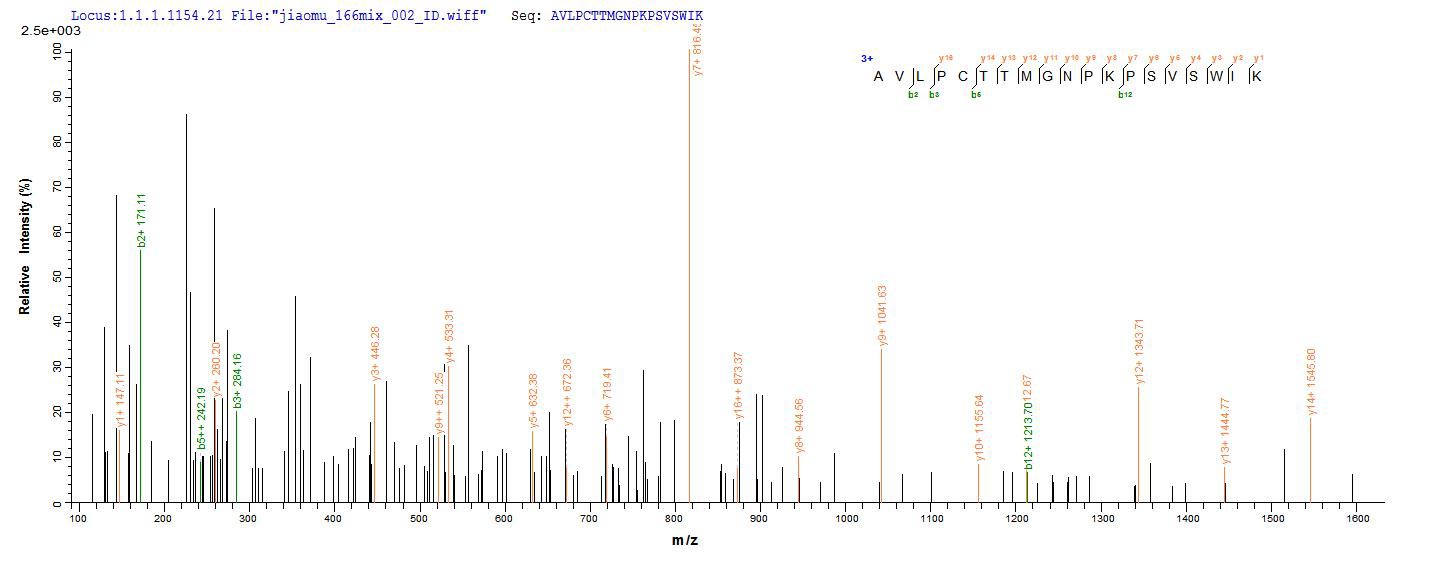Purity
Greater than 90% as determined by SDS-PAGE.
Research Area
Signal Transduction
Alternative Names
Musk; Nsk2; Muscle; skeletal receptor tyrosine-protein kinase; EC 2.7.10.1; Muscle-specific tyrosine-protein kinase receptor; MuSK; Muscle-specific kinase receptor
Species
Mus musculus (Mouse)
Expression Region
22-494aa
Target Protein Sequence
EKLPKAPVITTPLETVDALVEEVATFMCAVESYPQPEISWTRNKILIKLFDTRYSIRENGQLLTILSVEDSDDGIYCCIANNGVGGAVESCGALQVKMKPKITRPPINVKIIEGLKAVLPCTTMGNPKPSVSWIKGDNALRENSRIAVLESGSLRIHNVQKEDAGQYRCVAKNSLGTAYSKLVKLEVEVFARILRAPESHNVTFGSFVTLRCTAIGIPVPTISWIENGNAVSSGSIQESVKDRVIDSRLQLFITKPGLYTCIATNKHGEKFSTAKAAATVSIAEWSKSQKDSQGYCAQYRGEVCDAVLAKDALVFFNTSYRDPEDAQELLIHTAWNELKAVSPLCRPAAEALLCNHLFQECSPGVVPTPMPICREYCLAVKELFCAKEWQAMEGKAHRGLYRSGMHLLPVPECSKLPSMHRDPTACTRLPYLDYKKENITTFPSITSSRPSADIPNLPASTSSFAVSPAYSMT
Note: The complete sequence including tag
sequence, target protein sequence and linker sequence could be provided upon request.
Protein Length
Extracellular Domain
Tag Info
N-terminal 10xHis-SUMO-tagged and C-terminal Myc-tagged
Form
Liquid or Lyophilized powder
Note: We will preferentially ship the format that
we have in stock, however, if you have any special requirement for the format, please remark your
requirement when placing the order, we will prepare according to your demand.
Buffer
Tris-based buffer,50% glycerol
Storage Condition
Store at -20°C/-80°C upon receipt, aliquoting is necessary for mutiple use. Avoid repeated freeze-thaw
cycles.
Shelf Life
The shelf life is related to many factors, storage state, buffer ingredients, storage temperature
and the stability of the protein itself.
Generally, the shelf life of liquid form is 6 months at -20°C/-80°C. The shelf life of lyophilized
form is 12 months at -20°C/-80°C.
Lead Time
3-7 business days
Notes
Repeated freezing and thawing is not recommended. Store working aliquots at 4°C for up to one week.
Datasheet & COA
Please contact us to get it.
Description
The Recombinant Mouse Musk protein is a protein encoded by recombinant DNA that was cloned in an expression vector that supported the expression of Musk gene. This recombinant Musk protein was expressed in the host. The expression region is 22-494aa of the Mouse Musk. In the production, the expression vector contains N-terminal 10xHis-SUMO tag and C-terminal Myc tag. Every production step was performed with a strict QC system. The purity of this protein is 90%+ determined by SDS-PAGE.
The receptor tyrosine kinase MuSK (muscle-specific kinase) is the key signaling molecule during the formation of a mature and functional neuromuscular junction (NMJ). Signal transduction events downstream of MuSK activation induce both pre- and postsynaptic differentiation, which, most prominently, includes the clustering of acetylcholine receptors at synaptic sites. MuSK originally described as Trk-related receptor tyrosine kinase (RTK) in the electric organ of Torpedo californica, was isolated as a novel RTK from denervated mouse muscle and termed muscle-specific kinase due to its prominent expression in skeletal muscle. MuSK activation requires a complex interplay between its coreceptor Lrp4 (low-density lipoprotein receptor-related protein-4), the motor neuron-derived heparan-sulfate proteoglycan Agrin and the intracellular adaptor protein Dok-7. A tight regulation of MuSK kinase activity is crucial for proper NMJ development. Defects in MuSK signaling are the cause of muscle weakness as reported in congenital myasthenic syndromes and myasthenia gravis. Of note, recently it was shown that MuSK acts as coreceptor of bone morphogenic proteins in myoblasts to stimulate the expression of a distinct set of genes linking MuSK to pathways involved in muscle differentiation and growth.








